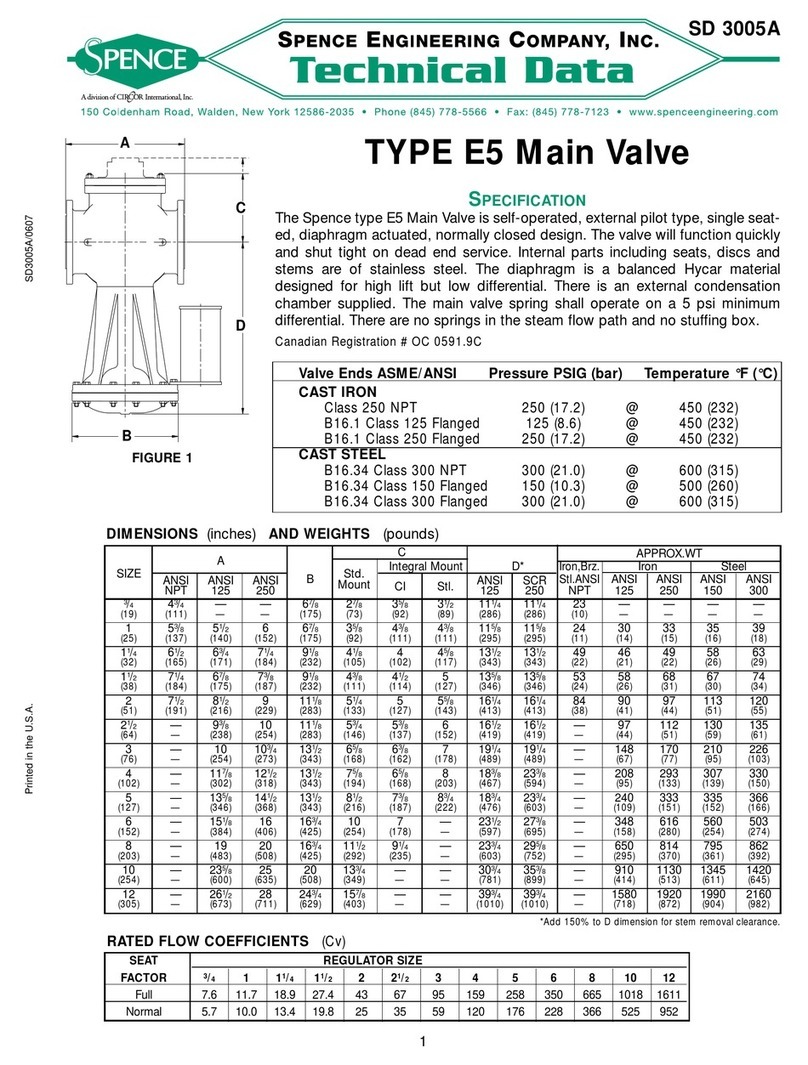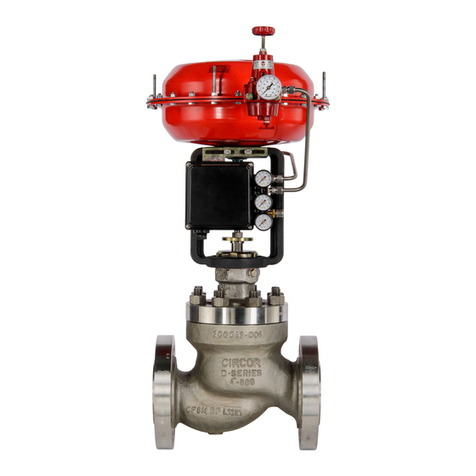
Installation, Operation and Maintenance Manual
SERIES T/TE/TW/TWE
ONE-PIECE TOP ENTRY
TRUNNION BALL VALVE
Page: 6of 12
Document Name: IOM-T
Revision: 15333
Release Date: 06/26/2015
the event of a stem seal failure (Sealweld “Ball
Valve Sealant” No. 5050, available from
Sealweld Corp., Houston, TX or Calgary, Alberta-
Canada). Also, in the event of internal seat/ball
interface leakage, sealant may be injected
through the two body lube fittings to provide
temporary sealing.
5) RECONDITIONING
KF Series T Ball Valves may be rebuilt to new
condition without removing the valve from the
pipeline.
Caution! Prior to disassembly, valve must first
be isolated from system pressure and flow. Also,
with the valve seat at approximately half open,
internal pressure must be bled to 0 psi. Finally, as
a safety precaution open ball cavity bleed valve
(21).
After observing the above caution, remove
retainer (17), stop plate (16) and stem bearing
(15). These items are not included on 8" bore
and larger valves or gear operated assemblies.
On gear operated valves, remove the covers for
access to mounting screws (2 each on 2" bore
valves, 4 each on all others). Use an Allen
wrench to loosen and remove mounting screws.
Segment gear position will have to be adjusted
by rotating the handwheel in order to have
access to all of the mounting screws. When
screws are removed lift gear operator case from
valve.
Rotate ball to full open position and remove
cap screws (12). Using a large flat blade
screwdriver, pry up and remove bonnet (2) and
bonnet seal (14). Next, remove the four seat
retractor screws (18) and seals (19). Screw the
four retraction tools into retraction ports until
contacting seats (7).
Note: 1) It is very important not to overstress
the seats by threading the seat retraction tools
in too deep. 2) If thick, very viscous grease or
sealant has been injected to effect a temporary
seal, body lube injection fittings (20) and internal
ball checks (40) (if included) should be removed
to allow sealant to extrude during seat retraction.
Now, using two box end wrenches, screw the
two seat retraction tools at one seat inward
simultaneously. This action will retract the seat
away from the ball. Watch for proper (even, not
cocked) seat movement. Continue retraction of
seat until approximately 1/16" clearance is
obtained between seat face and port face of the
ball. Now, using the two box end wrenches
simultaneously, repeat the process, screwing the
retraction tools in on the other seat until the 1
/16" clearance for ball removal is obtained.
Remove Ball/Stem (3) by pulling up on upper
stem. Be careful, observing that there is
adequate clearance between ball and seats for
ball/stem removal. After ball/stem is disengaged
from body, release the seats by simultaneously
unscrewing the seat retraction tools from each
set. Reach into bonnet port and remove each
seat, seat O-ring (8), seat back-up ring (9), seat
sub seal (10) and wave spring (11) as a unit, by
hand. Clean and inspect all parts for damage and
wear. Observe seat pocket bores, stem seal
bores and bonnet seal area for rust pits and
scale. If necessary, use fine emery for removal of
deposits on the machined surfaces. Fine emery
may also be used “very lightly” on the ball
sealing surfaces. Scratches or cuts on the
Nylon®/Teflon® seal surfaces of the seats are
cause for replacement. Flush lube and sealant
injection fittings and channels with two or three
pumps of general purpose grease while valve is
disassembled.
Inspect trunnion bearing (4) in both the body
and the bonnet. Do Not Attempt to Remove
These Bearings Unless Replacement is required!!
If bearing removal is necessary, use a durable
wide blade screwdriver or long chisel to split,
then drive out bearing. Be careful not to gouge
or score bearing journals.































